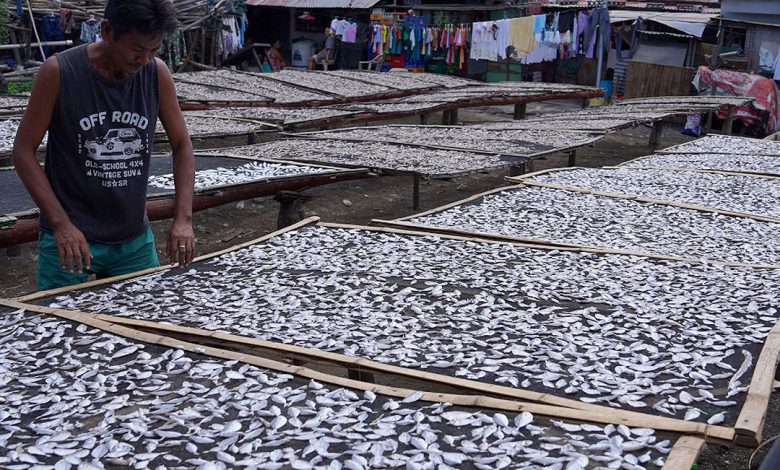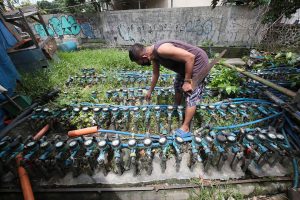Agriculture posts surprise Q1 growth

PHILIPPINE AGRICULTURAL production posted a surprise 2.1% growth in the first quarter, the Philippine Statistics Authority (PSA) said on Wednesday.
Data from the PSA showed the value of production in agriculture and fisheries at constant 2018 prices expanded by an annual 2.1% to P428.69 billion in the January-to-March period.
This was a turnaround from the 0.3% decline in the first quarter of 2022 and the 1% contraction in the fourth quarter of 2022.
“This was due to the annual increases in the value of production of crops, livestock, poultry, and fisheries,” the PSA said.
Analysts earlier said they expected flat agricultural output for the first three months of 2023.
At current prices, the value of production in agriculture and fisheries rose by 14.1% to P569.94 billion in the first quarter, faster than the 2.2% in the same period a year ago and 9.3% in the fourth quarter of 2022.
Agriculture usually contributes around a tenth to the Philippines’ overall gross domestic product (GDP). The PSA is scheduled to release first-quarter GDP data this morning (May 11).
Raul Q. Montemayor, national manager of the Federation of Free Farmers, said farm output growth was coming from a “very low base” in the first quarter of 2022.
“Compared to the low output in the first quarter of 2022, it appears that there was a significant growth in the first quarter of 2023. But in fact, we just got back to approximately 2021 output levels for crops,” he said in a Viber message.
Mr. Montemayor noted that natural calamities, animal diseases, and “pro-import policy of the government” have hurt farmgate prices, and discouraged farmers from expanding production.
Crops, which made up 57.8% of the total farm output, expanded by 1.7%, reversing the 1.7% decline in the same quarter last year, and the 1% dip in the fourth quarter.
Growth in crops production was mainly due to the 5.2% increase in paddy rice (palay), and 3.2% jump in corn.
“First and second-quarter rice production will be good enough to last us until the next harvest during the wet season which is around August and September,” said Danilo V. Fausto, president of the Philippine Chamber of Agriculture and Food, Inc.
Despite palay output growth, Mr. Fausto noted that additional imports may be needed for any shortage caused by the upcoming El Niño and other natural calamities.
PSA data showed an increase in output for tobacco (14.4%), onion (6.4%), cassava (5.2%), cabbage (5.2%), abaca (3.2%), tomato (3%), mango (2%), coconut (1.6%), coffee (1.3%), among others.
However, there was a decline in the output of several crops such as sugarcane (-17%), sweet potato (-7.5%), rubber (-5.3%), and potato (-4.4%).
United Sugar Producers Federation President Manuel R. Lamata attributed the drop in sugarcane production to the impact of climate change, as well as high prices of fertilizer, fuel and labor.
At current prices, the value of crop production increased 14% to P306.5 billion in the first quarter.
LIVESTOCK, POULTRYLivestock production, which made up 14.4% of total farm output, increased by 4.1% in the first quarter. This was an improvement from the 1% contraction in the first three months of 2022, and the 2.5% growth in the previous quarter.
Hog and cattle production expanded by 5.1% and 1.9%, respectively. However, lower output was seen for dairy (-11.4%), goat (-3.6%), and carabao (-1.2%).
At current prices, the value of livestock production rose 3.2% to P92.86 billion in the first quarter.
Meanwhile, poultry output, which accounts for 15.1% of total agriculture production, grew by 3.2% in the first quarter. This is slower than the 12.3% growth in the same period in 2022, but faster than the 2.5% increase in the fourth quarter.
PSA data showed higher production of duck eggs (3.8%), chicken (3.3%), and chicken eggs (2.8%). In contrast, duck production fell 0.3%.
At current prices, the value of poultry production jumped by 18.3% to P88.9 billion in the first quarter.
“The two largest subsectors (chicken and hogs) are slowly recovering, so you can see a steady growth in the volume of production from 2021,” Mr. Montemayor said.
However, he noted hogs output may have not fully recovered from the African Swine Fever outbreak, while the poultry sector is still recovering from avian influenza.
“Imports are discouraging many producers from expanding and investing. This includes smuggling, misdeclaration and undervaluation of imports,” Mr. Montemayor added.
At the same time, fisheries output inched up 0.3% in the first quarter, from the 5.8% decline in the same period in 2022 and the 6.7% drop in the previous quarter.
A double-digit rise in production was seen for squid (18.2%), tilapia (10.8%) and blue crab or alimasag (10.5%), while higher output was recorded for milkfish or bangus (6.6%), big-eyed scad or matangbaka (5.9%), yellowfin tuna or tambakol (5%), and grouper or lapu-lapu (4.1%).
Double-digit declines were registered in mudcrab or alimango (-37.6%), bigeye tuna or tambakol (-35%), frigate tuna or tulingan (-29%), slipmouth or sapsap (-24.8%), tiger prawn (-24.2%), and threadfin bream or bisugo (-23%).
At current prices, the value of fisheries output increased 25.1% to P81.68 billion in the first quarter.
Asis G. Perez, former director of the Bureau of Fisheries and Aquatic Resources and convenor of Tugon Kabuhayan, said the output for tilapia and milkfish increased since there was low production in the same period last year.
“Some ingredients like processed animal protein (PAP) were not available to us so from the first quarter of 2022 to the fourth quarter, we were negative. Now we’re just returning or trying to get back to the previous number, but we’re not yet there especially for bangus,” Mr. Perez said.
He expects the fisheries sector to continue to recover this year, with the arrival of PAP which is an animal by-product used as a raw material for fish feed.
“We are confident for we have the feed ingredients and then the situation will be better and most likely continue to return from our previous fisheries performance,” Mr. Perez said.
Last December, the DA lifted the ban on imports of PAP from Italy, which accounts for 60-70% of the country’s annual PAP imports of 300,000 metric tons.
The Department of Agriculture (DA) is targeting 2.5% farm output growth this year. — Sheldeen Joy Talavera




